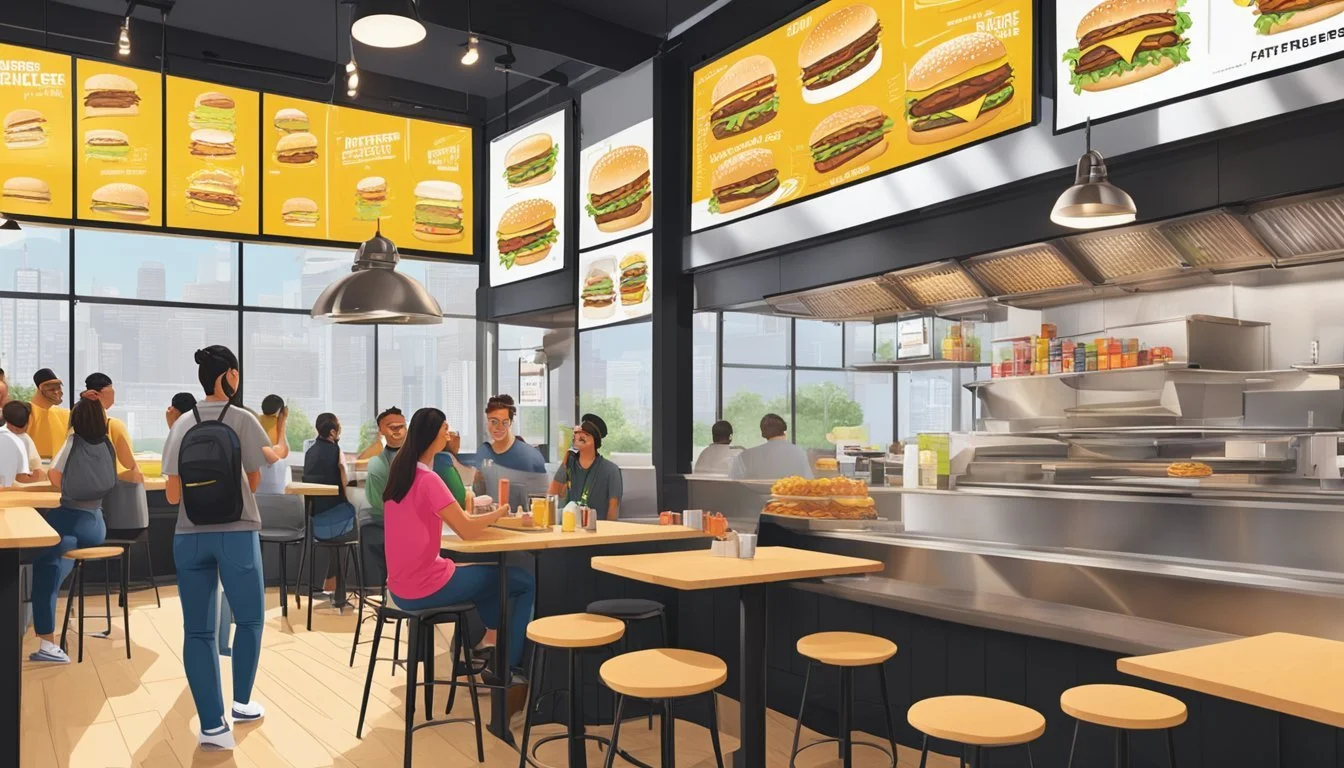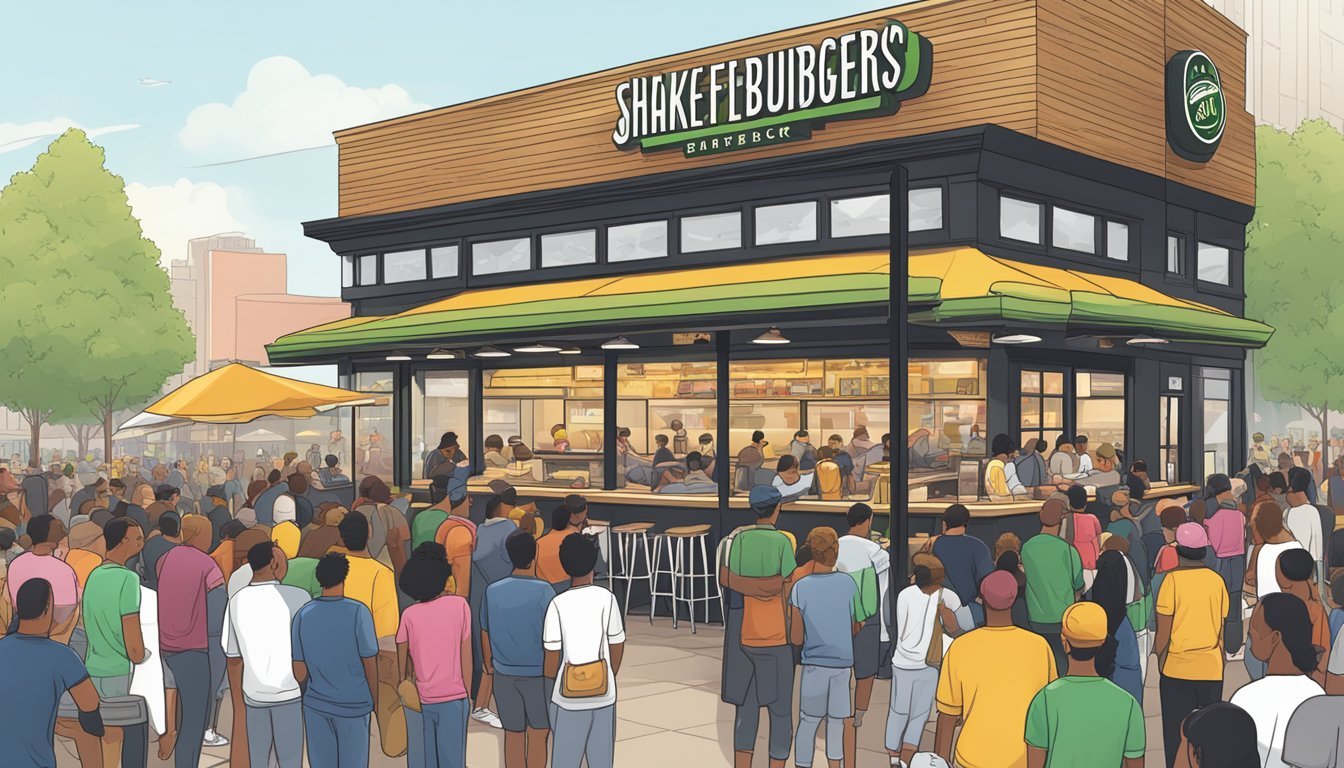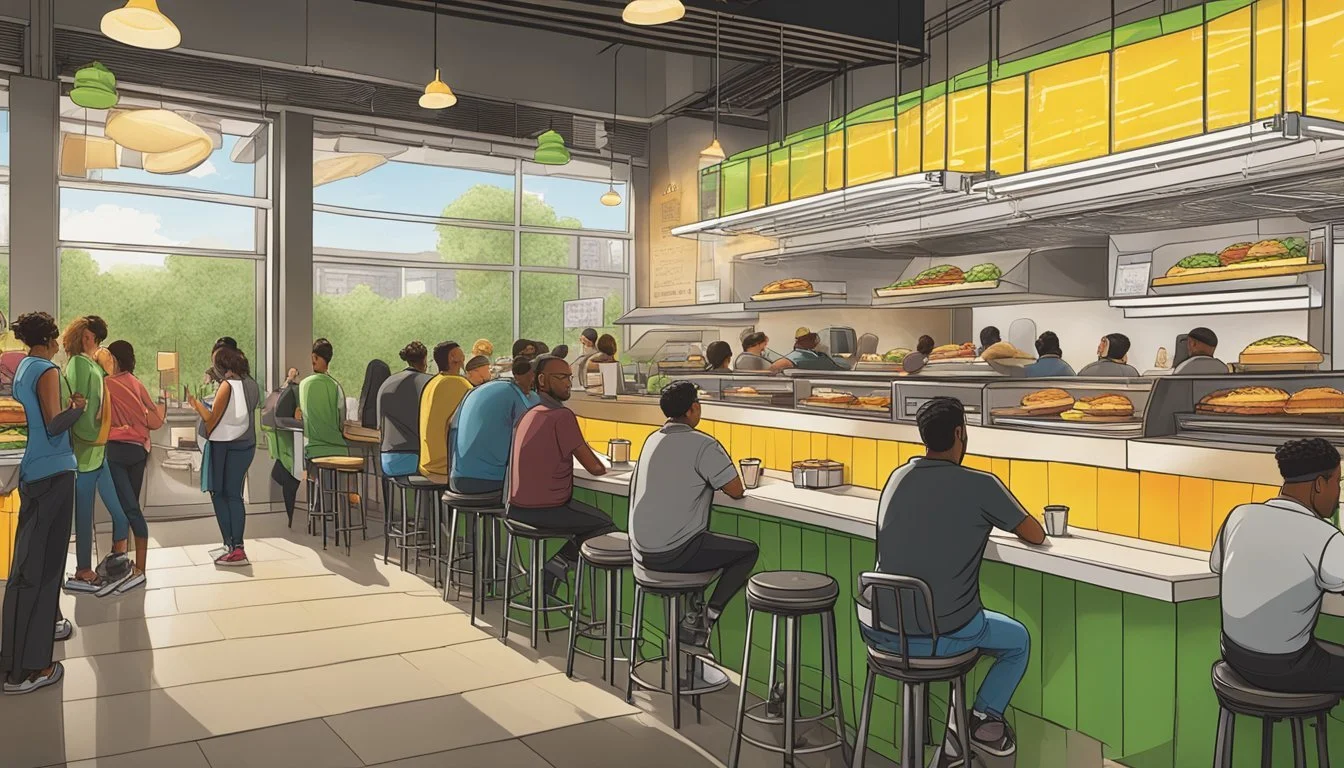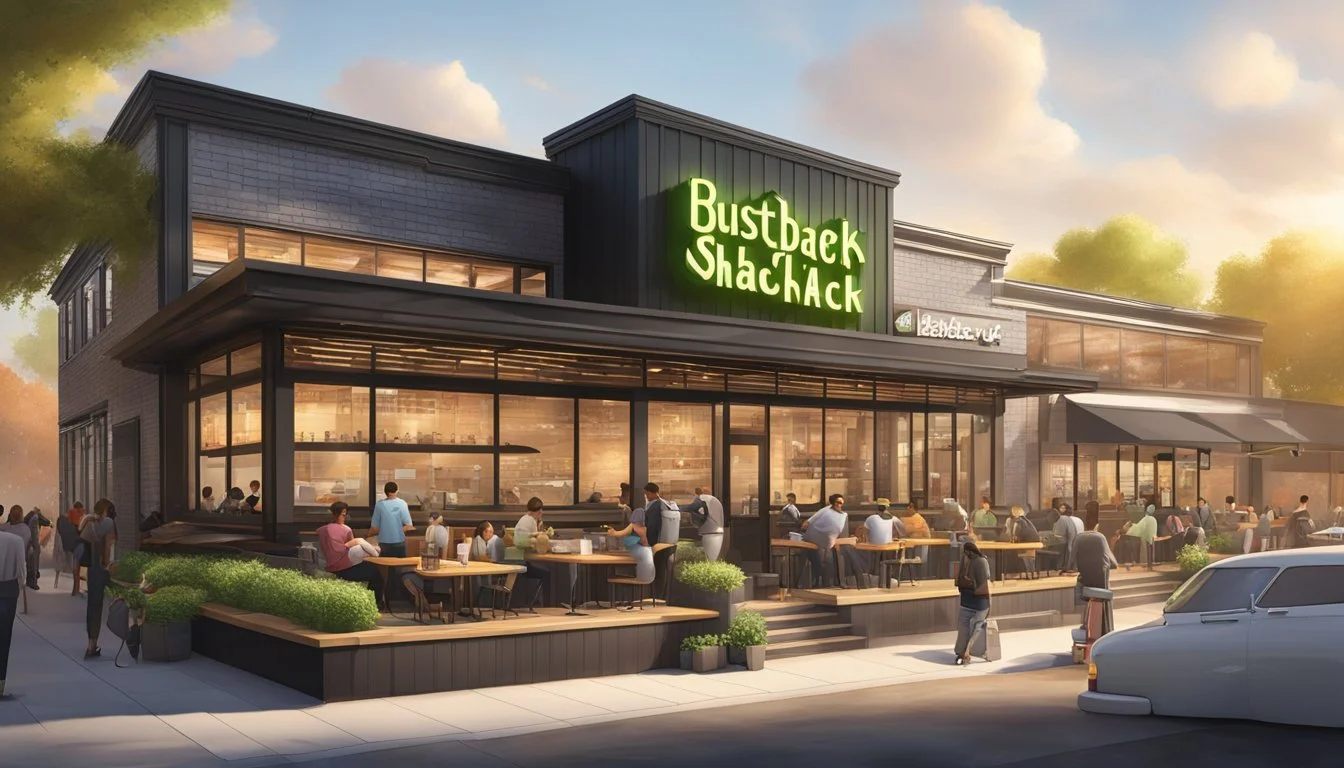Shake Shack vs Fatburger
A Comprehensive Comparison of Burger Excellence
When exploring the American fast-food landscape, burger enthusiasts often find themselves debating the merits of various chains, two prominent names being Shake Shack and Fatburger. Shake Shack, recognized for its modern take on classic roadside burger joints, has an extensive menu that includes a variety of burgers, hot dogs, and frozen custards, appealing to a diverse audience with its fresh ingredients and innovative offerings. Originating in New York City, the brand has carved out a niche with its "ShackBurger," crinkle-cut fries, and shakes, forging a reputation for quality that has allowed for a successful global expansion.
In contrast, Fatburger, a West Coast classic since the 1950s, offers a more traditional burger joint experience with an emphasis on customization, permitting customers to build their burgers with an array of fresh toppings. They're known for their distinctive larger patties, with the Fatburger itself being a signature item. While not as widespread as Shake Shack, Fatburger maintains a loyal following drawn to its retro diner vibe and made-to-order approach, standing as a stalwart for size and flavor in the fast-food arena.
Both restaurants boast a strong commitment to providing quality food and a unique dining experience. However, they differ notably in menu diversity, atmosphere, and geographic presence. Shake Shack's contemporary brand and menu offerings resonate with a demographic seeking fast-casual dining with an artisanal twist, while Fatburger caters to traditionalists seeking a hearty, classic burger. As such, the contest between Shake Shack and Fatburger is one of modern refinement against conventional heartiness.
Brand Histories
This section explores the establishment and growth of two major American burger franchises, Shake Shack and Fatburger, both of which have distinct origins and paths to success within the fast-food industry.
Shake Shack's Rise to Fame
Shake Shack originated in 2001 as a hot dog cart in Madison Square Park, New York City. It was an initiative by restaurateur Danny Meyer’s Union Square Hospitality Group to support the Madison Square Park Conservancy’s first art installation. The cart was an instant success and spawned a permanent kiosk within the park by 2004. Shake Shack's menu quickly expanded to include burgers, establishing it as a modern "roadside" burger restaurant. The brand's commitment to quality ingredients and innovative recipes garnered a loyal following. In its growth, Shake Shack maintained its New York roots and ethos while successfully adapting to varied markets globally.
Fatburger's West Coast Origins
Fatburger's story began on the West Coast in 1947 when Lovie Yancey opened a small hamburger stand in Los Angeles, California. Originally named "Mr. Fatburger," the "Mr." was dropped several years later. It cultivated a reputation for serving large, custom-made burgers using fresh ingredients and lean beef, despite the implications of its name. Fatburger took pride in being a staple of the Los Angeles dining scene before expanding throughout the West Coast and eventually internationally. Its approach has been to offer a dining experience that reflects Californian tastes and lifestyles, focusing on quality and customizability.
Menu Offerings
When comparing Shake Shack and Fatburger, it's essential to focus on their menu, particularly the unique burger offerings and the variety of toppings and sides.
Shake Shack's Signature Items
Shake Shack has curated a menu that combines classic American fast-food with a touch of modern flair. Central to their offerings is the ShackBurger, a cheeseburger topped with lettuce, tomato, and the proprietary ShackSauce. For those seeking a twist on tradition, the ‘Shroom Burger includes a crisp-fried portobello mushroom filled with melted cheeses. Aside from burgers, they serve a range of chicken sandwiches and hand-cut fries with or without cheese.
ShackBurger: A cheeseburger with lettuce, tomato, and ShackSauce.
'Shroom Burger: A fried portobello mushroom filled with melted cheese.
SmokeShack: A cheeseburger with applewood smoked bacon and chopped cherry pepper.
Fatburger's Classic Selections
Fatburger positions itself as a traditional burger joint with a focus on customization. The restaurant offers a range from the original hamburger to the substantial Bacon Cheeseburger. Customers can tailor each burger by adding items like grilled mushrooms, onions, and a variety of cheeses. The classic offerings are complemented by sides such as "Fat Fries" or skinny fries and handmade onion rings.
Hamburger: A simple beef patty on a bun, with choices of various toppings.
Bacon Cheeseburger: A hamburger with added bacon and cheese, customizable with other toppings.
Fatburger: The original Fatburger, with options to add items like egg, bacon, and chili.
Both Shake Shack and Fatburger offer unique experiences in terms of menu choices, ensuring that they stand out within the competitive fast-food landscape shared with giants like McDonald's, Burger King, and White Castle.
Culinary Experience
When evaluating the culinary experience at Shake Shack and Fatburger, it is essential to consider the taste and flavor profiles of their offerings, as well as the quality of ingredients used in their signature burgers. Each brand boasts its unique approach to crafting the classic burger, focusing on aspects that appeal to their respective audiences.
Taste and Flavor Profiles
Shake Shack has curated a menu known for its New York-style gourmet burgers. Its signature ShackBurger is notable for its balance of salty, rich, and savory flavors, complemented by fresh lettuce, tomato, and ShackSauce. They season their patties, a blend of chuck and brisket, with a proprietary blend before grilling, which results in a juicy and flavorful experience. The texture of their butter-toasted bun also adds to the overall taste, ensuring that every bite is as satisfying as the last.
In contrast, Fatburger's claim to fame comes from their traditional, custom-made burgers modeled after the ideals of a 'better burger'. Offering a range of sizes from 'The Original' to the 'XXXL', their burgers are cooked-to-order on the grill and can be loaded with an array of toppings. Customers can enhance their meal with mustard, ketchup, mayonnaise, and more, tailoring the flavor profile to their preference. Juiciness is paramount, with each bite providing a fresh, tangy, and subtly sweet mix of tastes.
Quality of Ingredients
Shake Shack prides itself on using high-quality, fresh ingredients with no preservatives. Their meat is antibiotic-free, sourced from reputable suppliers, and the buns are non-GMO. Their commitment to freshness extends to the produce they use for their burgers, such as lettuce and tomato, promising a crisp and clean taste.
Fatburger also emphasizes the freshness of their ingredients. They use 100% pure lean beef, with no additives or preservatives. The patty is seasoned upon order and cooked on the grill, allowing the natural flavors of the meat to shine through. Their buns are toasted to a light crisp, offering a delicate texture that contrasts the juicy burger. Standard toppings like lettuce, tomato, and onions add a layer of freshness, contributing to a high-quality burger experience.
Atmosphere and Brand Image
When entering a burger joint, customers are often greeted with an ambiance that reflects the brand’s identity. Shake Shack boasts a modern aesthetic, while Fatburger carries a nostalgic diner atmosphere. These settings greatly contribute to the dining experience, giving each establishment its distinctive charm.
Shake Shack's Modern Appeal
Shake Shack, founded by Danny Meyer in New York City, stands out with a sleek and contemporary design. Its locations typically feature clean lines, ample outdoor seating, and a welcoming vibe. This modern touch extends to their menu, offering not only classic fast food items but also beer, wine, and artisanal lemonade, catering to a diverse crowd looking for a fresh and upscale fast-food experience.
Fatburger's Retro Diner Vibe
On the flip side, Fatburger, originating in Los Angeles, California, channels the classic American diner from the 1950s. Its interior design frequently showcases bold reds and whites, checkered flooring, and nostalgic music playing in the background. Customers can expect to savor their burgers along with classic root beer floats, embodying the vibe of a quintessential Southern California burger stand.
Customer Experience
When comparing Shake Shack and Fatburger, it's essential to consider the variations in customer experience, which encompasses aspects like service and convenience, as well as the ability to customize orders to meet diverse dietary needs.
Service and Convenience
Shake Shack has established itself with a friendly service atmosphere and modern convenience. Its locations typically feature an urban design with a contemporary and welcoming ambiance. Customers value the consistency of service across different locations, making Shake Shack a reliable choice for a quick and enjoyable meal. In contrast, Fatburger is known for a more retro diner feel, providing a nostalgic fast-food experience. Service at Fatburger tends to be personalized, with a homey touch that some customers prefer.
Shake Shack's expansion into international markets means it's more accessible to a broader audience, while Fatburger's locations, though widespread, are more concentrated in the United States. Both establishments offer mobile ordering and delivery options through various third-party platforms, catering to the on-demand needs of modern consumers.
Customization and Dietary Options
Both Shake Shack and Fatburger score high on customization options. Shake Shack appeals to the modern palate with a variety of menu items, including their signature shakes – rich and creamy concoctions like the classic ShackBurger to the vegetarian 'Shroom Burger. One can even discover a 'secret menu', with items like the Peanut Butter Bacon Shack, adding a layer of intrigue and customization.
Fatburger offers a unique experience with their build-your-own burger approach, allowing customers to choose from an array of toppings and sizes – right up to the massive 'XXXL burger'. Those with specific dietary needs can opt for alternatives like a vegetarian burger or even a grilled cheese.
Moreover, Fatburger's offerings extend to milkshakes that are creamy and rich, rivaling the shakes at Shake Shack. Both restaurants thus provide a variety of customizable options that cater to different dietary preferences, ranging from meat-lovers to vegetarians.
Nutritional Consideration
When comparing Shake Shack and Fatburger, it's integral to consider the nutritional content of their menu offerings. This section will illuminate the caloric content and health aspects of different food items available at these burger joints.
Caloric Content and Health Aspects
Shake Shack is known for its modern approach to the classic American burger shack. In terms of caloric content, a lettuce-wrapped Veggie Shack contains about 310 calories. It further includes 18g of fat and 900mg of sodium, making it a lower calorie option for diners at the establishment. Shake Shack also offers a variety of toppings such as lettuce, tomato, and onion, which can add nutritional value and fiber to their burgers without substantially increasing the calorie content.
Fatburger, on the other hand, offers the Original Fatburger, the caloric content of which can vary widely depending on the size (they offer options ranging from small to XXXL). For example, a medium Fatburger contains approximately 590 calories, 29 grams of fat, and significant levels of protein. It's important to note that adding extras such as cheese or an extra patty can significantly increase the calorie and fat content, just as with any burger you might order from Shake Shack or another establishment.
Both Shake Shack and Fatburger have menu items that go beyond burgers, including fries and shakes, which are high in calories and should be taken into account when assessing the nutritional value of a meal. Shake Shack's fries, for instance, contain approximately 420 calories and 19 grams of fat, while their shakes can be even more calorie-dense, often exceeding 700 calories depending on the size and flavor.
Furthermore, while offering a range of toppings such as lettuce, tomato, and grilled onions that can contribute additional nutrients, patrons at Fatburger, much like at Shake Shack or other burger establishments like California's In-N-Out or Dairy Queen, need to be mindful of how these additions impact the overall healthfulness of their meal.
When considering nutritional aspects, diners should pay attention to these details and understand the impact of their choices on caloric intake and overall health.
Price and Value Comparison
When evaluating Shake Shack and Fatburger, it's crucial to discuss their menu pricing and the perceived value of their offerings in terms of portion size and quality.
Cost Analysis
Shake Shack's menu features a variety of premium burgers, with prices for a single ShackBurger starting from around $5.29. Combining this with fries and a drink, a full meal can quickly approach $10 to $15. In comparison, Fatburger offers its Original Fatburger at a slightly higher price point, but still in a similar range. Given the fast-food landscape, where a standard combo meal at establishments like Burger King can cost significantly less, both Shake Shack and Fatburger position themselves in a more premium segment.
Shake Shack Single ShackBurger: ~$5.29
Fatburger Original Fatburger (Medium): ~$5.99-$6.99
Fries: ~$2.99 at both joints
Drink: Average of ~$2.29
Portion Sizes and Satisfying Eats
Shake Shack’s offerings are often praised for their quality ingredients and satisfying flavors, particularly their custom-blend of sirloin and chuck. However, patrons note that portion sizes can be modest for the price. Fatburger's proposition hinges on its customizable burgers, where customers have the liberty to scale their burger from small to XXL, catering to a larger appetite. This allows consumers to perceive greater value in terms of portion size, with Fatburger living up to its name. Both restaurants provide a range of other fast food items, but their flagship burgers remain the focal point for value comparison.
Burger Sizes: Fatburger scales from small to XXL
Customization: Fatburger allows extensive topping choices
Fries: Similar serving sizes offered by both chains
Geographical Availability
When comparing Shake Shack and Fatburger, an important consideration is where these burger joints are located. Both chains have a presence within the United States, but they vary in their geographical availability, from the East to the West Coast and extending internationally.
East Coast vs. West Coast Presence
Shake Shack began as a hot dog cart in New York City and has since expanded predominantly along the East Coast. There are numerous locations in New York and other major cities in this region. Conversely, Fatburger originated in Los Angeles, California, and its presence is stronger on the West Coast. While Shake Shack has penetrated the California market, Fatburger has been a staple there since 1952 and maintains numerous locations throughout the state.
Shake Shack:
Strong presence in New York and the East Coast
Expanding in California and other West Coast locales
Fatburger:
Born and rooted in Los Angeles, California
Predominantly a West Coast establishment
International Reach of Both Brands
Both Shake Shack and Fatburger have expanded beyond the United States. Shake Shack has a significant international reach, with locations in countries such as Japan, South Korea, and the United Kingdom. Fatburger has also made its way onto the international scene, but to a lesser degree, boasting locations in countries like Canada and Malaysia.
Shake Shack:
International locations including Japan, South Korea, United Kingdom
Fatburger:
Present in select international markets like Canada, Malaysia
Conclusion
When comparing Shake Shack and Fatburger, each has its own strengths catering to different preferences of burger lovers.
Shake Shack is renowned for blending a modern take on classic burgers, often recognized for its taste and the quality of ingredients. The restaurants come with a reputation for their fresh, never frozen, all-natural Angus beef burgers which resonate with patrons looking for a premium burger experience.
Fatburger, on the other hand, offers a more traditional burger, capitalizing on their longtime presence in the burger industry. They provide hefty burgers with lean beef and a variety of toppings that allow customers to customize their meal to their taste.
Shake Shack
Burger Quality: Fresh, Angus beef
Customization: Limited options
Taste: Modern, unique flavors
Price: Generally higher
Fatburger
Burger Quality: Lean beef, traditional
Customization: Wide range of toppings
Taste: Classic burger taste
Price: More affordable
The decision on which burger joint is better largely rests on what the customer values. For those seeking quality and innovative flavors, Shake Shack may hold the upper edge. However, for diners desiring a customizable and classic burger, Fatburger stands out.
Ultimately, both establishments have successfully satisfied the cravings of countless diners. It is the individual's palette and preference that will dictate their choice between the two illustrious burger joints.









